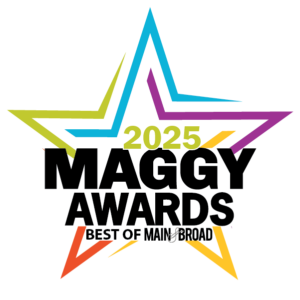Peak hurricane season starts September 1st. Follow these 10 steps to prepare your finances now!
Living along the East Coast comes with numerous advantages, from the stunning landscapes of the Blue Ridge Mountains to the vibrant coastal communities. However, it’s not always smooth sailing, especially when hurricane season arrives each June through November.
Recent data and models indicate that hurricanes are becoming more severe, with stronger winds, heavier rainfall, and increased flooding impacting coastlines. For instance, Hurricane Florence which hit in 218 caused widespread devastation and led to an estimated $24 billion in damages.
We are most at risk for hurricanes from August through October. The peak of the season is around September 10, when ocean waters are at their warmest, which can create ideal conditions for hurricanes to form.
Coinciding with National Preparedness Month, September serves as a powerful reminder to safeguard our homes and loved ones and ensure our financial security is resilient in the face of natural disasters.
At Fidelity Bank, we recognize the unique risks our community faces and are committed to helping you prepare your finances so you’re ready for whatever challenges come your way. To help, we’ve compiled this comprehensive guide to help you prepare your finances ahead of natural disasters.
1. Create an Emergency Fund
Why It’s Important: An emergency fund provides a financial safety net, allowing you to cover unexpected expenses such as temporary housing, evacuation costs, or repairs. This fund is essential for maintaining stability during a disaster.
How to Do It:
- Build a Cash Reserve: Aim to save three to six months’ worth of living expenses in a liquid account, such as a savings account. This money should be easily accessible if you need it quickly.
Pro Tip: Regularly contribute to your emergency fund by setting up automatic transfers from your checking account to your savings account.
2. Review and Update Insurance Policies
Why It’s Important: Insurance is your first line of defense against the financial impact of a natural disaster. Ensuring that your coverage is up-to-date and adequate can save you from significant out-of-pocket expenses.
How to Do It:
- Check Coverage Levels: Review your homeowners, renters, auto, and health insurance policies to ensure they provide adequate protection, especially for specific risks like flooding and hurricanes.
- Document Your Belongings: Create an inventory of your possessions, including photos and receipts. This documentation will be invaluable if you need to file an insurance claim.
- Understand Your Deductibles: Be aware of how much you’ll need to pay out-of-pocket before your insurance coverage begins.
Pro Tip: Schedule an annual insurance review with your agent to discuss any changes in your coverage needs.
3. Set Up Automatic Payments and Direct Deposits
Why It’s Important: In the event of a disaster, you might not have regular access to your bank or the ability to manually pay bills. Automating payments and direct deposits ensures your financial obligations are met even when you’re not able to manage them personally.
How to Do It:
- Automate Bill Payments: Set up automatic payments for utilities, loans, credit cards, and other essential bills through your online banking portal. This prevents late fees and keeps your accounts in good standing.
- Use Direct Deposit: Ensure that your income, such as paychecks or Social Security benefits, is directly deposited into your bank account. This guarantees access to your funds, even if banks are closed.
Pro Tip: Review your automated payments annually to ensure they are still accurate and necessary.
4. Organize Important Documents
Why It’s Important: In the aftermath of a disaster, having quick access to important documents can expedite the recovery process and assist in filing insurance claims or proving your identity.
How to Do It:
- Create Digital Backups: Scan and store digital copies of crucial documents, such as identification, insurance policies, property deeds, and financial records. Store these backups in a secure cloud service or on a portable hard drive.
- Prepare a Physical Kit: Keep physical copies of essential documents in a waterproof and fireproof safe. Include items like your ID, passports, insurance cards, and emergency contact information. Also, consider keeping some cash too.
Pro Tip: Periodically update your digital and physical documents to reflect any changes in your personal or financial situation. Also, check that the contact information on file at your bank is correct.
5. Utilize Financial Tools and Apps
Why It’s Important: During a disaster, access to financial services can be disrupted. Using digital tools and apps can help you maintain control over your finances, even if you’re unable to visit a branch or use an ATM.
How to Do It:
- Mobile Banking: Download and set up the Fidelity Bank mobile app. This allows you to manage your accounts, transfer funds, deposit checks, and pay bills from your smartphone or tablet, no matter where you are.
- CardControl: Use tools like CardControl to monitor and manage your debit card. You can instantly disable your card if it’s lost or stolen.
- Set Up Alerts: Configure account alerts for transactions, low balances, or unusual activity to stay informed and take prompt action when necessary.
Pro Tip: Familiarize yourself with these tools before an emergency strikes, so you’re comfortable using them.
6. Plan for Access to Cash
Why It’s Important: Power outages and disruptions to electronic payment systems can make accessing cash difficult. Having a plan for accessing cash ensures you can cover essential purchases during an emergency.
How to Do It:
- Keep Some Cash on Hand: Store a small amount of cash in a secure place within your home. Small denominations are best, as they’re easier to use in emergencies.
Pro Tip: Avoid relying solely on cash, as it can be lost or stolen. Use it as a complement to other payment methods.
7. Communicate Your Plan
Why It’s Important: In a disaster, clear communication with family members and financial institutions is crucial for ensuring everyone’s safety and financial security.
How to Do It:
- Discuss with Family: Make sure your family members are aware of your financial preparedness plan, including where to find emergency funds and important documents.
- Establish a Communication Plan: Determine how you will stay in touch with your family and your bank if regular communication channels are disrupted.
Pro Tip: Designate an out-of-town contact who can act as a relay point for family members to check in with during a disaster.
8. Stay Informed and Updated
Why It’s Important: Staying informed about potential threats and reviewing your financial preparedness regularly can help you respond more effectively when disaster strikes.
How to Do It:
- Monitor Weather Alerts: Use reliable sources like the National Weather Service or local news outlets to stay updated on potential threats.
- Review Your Plan Annually: Revisit and update your financial preparedness plan every year or whenever there are significant changes in your financial situation.
Pro Tip: Sign up for emergency alerts from your local government to receive timely updates about natural disasters in your area.
9. Consider Alternative Payment Methods
Why It’s Important: Having multiple payment options ensures that you can still make purchases if one method becomes unavailable during a disaster.
How to Do It:
- Set Up Your Digital Wallet: Ensure your mobile wallet is set up with your debit and credit cards. This allows you to make contactless payments if your physical cards are lost or damaged.
Pro Tip: Test your mobile wallet and backup payment methods periodically to ensure they work as expected.
10. Meet With A Local Banker
Find a banker near you by visiting our locations page.
Why It’s Important: Your local banker understands your unique financial situation and can provide personalized advice on how to best prepare your finances for a disaster. This could include reviewing your current accounts, recommending appropriate savings strategies, or identifying the best insurance products for your needs.
How to Do It:
- Review Your Accounts: Schedule a meeting with a local banker to ensure that you have quick and easy access to funds during a disaster. This could include setting up automatic transfers, linking accounts, or ensuring you have sufficient overdraft protection.
- Digital Tools Setup: Your banker can help you set up digital tools like mobile banking apps, alerts for unusual account activity, and CardControl features. These tools can be critical for managing your finances when access to bank branches is limited.
- Emergency Notifications: They can also assist in setting up notifications to keep you informed of any transactions or changes in your accounts.
Pro Tip: Establishing a relationship with your local banker means you’ll have a direct point of contact if you need assistance during or after an emergency. Knowing who to call can save you time and stress in an emergency!
Final Thoughts: Be Prepared, Stay Secure
Financial preparedness is a key aspect of overall disaster readiness. By taking these steps to protect your finances, you can reduce the stress and uncertainty that often accompany natural disasters. Being prepared today means you can focus on what truly matters when disaster strikes. Stay safe, stay informed, and trust Fidelity Bank to be Right by You, every step of the way.






